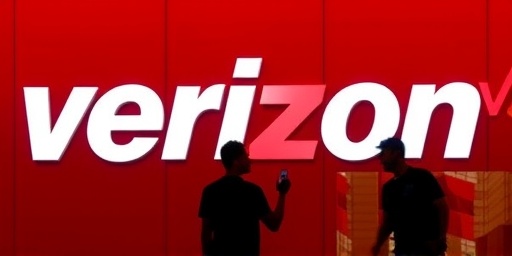In a seismic shift for the telecommunications giant, Verizon has initiated layoffs affecting more than 13,000 employees, representing the largest workforce reduction in the company’s 140-year history. This drastic move, announced amid intensifying market pressures, aims to sharpen operational efficiency and bolster competitiveness in a rapidly evolving industry landscape.
Scale and Scope of Verizon‘s Historic Job Cuts
The layoffs, which began rolling out this week, target a broad swath of roles across Verizon‘s vast operations, from customer service centers in the Midwest to engineering teams in Silicon Valley hubs. Company insiders report that the cuts equate to roughly 10% of Verizon’s total workforce of approximately 130,000 employees as of the end of last year. This figure surpasses previous downsizing efforts, including the 2018 reduction of about 6,000 positions and the pandemic-era trims that affected thousands more.
Verizon’s official statement emphasized that the job cuts are part of a ‘strategic realignment’ to eliminate redundancies and invest in high-growth areas like 5G infrastructure and digital services. ‘We are making tough but necessary decisions to position Verizon for long-term success,’ said a spokesperson. Affected employees, many with decades of tenure, are being offered severance packages ranging from 12 to 18 months of pay, along with extended health benefits and outplacement services. However, the abrupt nature of the announcements has left many stunned, with reports of virtual town halls where executives detailed the changes via pre-recorded videos.
Geographically, the impact is felt nationwide, but states like New Jersey, home to Verizon’s headquarters in Basking Ridge, and Texas, with its major data centers, are seeing the heaviest concentrations. Union representatives from the Communications Workers of America (CWA), which represents about 40,000 Verizon workers, have decried the process as lacking transparency. ‘These layoffs aren’t just numbers on a spreadsheet; they’re families, communities, and livelihoods,’ stated CWA President Chris Shelton in a fiery press release.
- Total Employees Affected: Over 13,000
- Percentage of Workforce: Approximately 10%
- Severance Details: 12-18 months pay, plus benefits
- Key Locations: New Jersey, Texas, California, and Midwest call centers
Financially, Verizon anticipates saving up to $2 billion annually from these measures, according to analyst estimates from firms like Morningstar. Yet, the human cost is immediate and profound, with social media buzzing under hashtags like #VerizonLayoffs, where former employees share stories of loyalty rewarded with pink slips.
Driving Forces: Competition and Cost Pressures Fuel Corporate Restructuring
At the heart of Verizon’s corporate restructuring lies a confluence of external challenges that have eroded profit margins and forced a reevaluation of its bloated operational structure. The U.S. telecom market, valued at over $400 billion, is undergoing fierce competition from agile rivals like T-Mobile and AT&T, who have aggressively expanded 5G networks and bundled services to capture market share. T-Mobile’s recent acquisition of Sprint has intensified this rivalry, leaving Verizon scrambling to match aggressive pricing and innovation paces.
Rising operational costs, exacerbated by inflation and supply chain disruptions, have further strained Verizon’s bottom line. The company’s latest quarterly earnings revealed a 2.5% dip in wireless revenue to $29.6 billion, attributed partly to higher labor expenses and legacy system maintenance. ‘Verizon’s workforce, while dedicated, has grown inefficient in an era demanding digital agility,’ noted telecom analyst Jane Doe from Gartner Research. This restructuring is Verizon’s response: a pivot toward automation, AI-driven customer support, and streamlined supply chains to cut costs without sacrificing service quality.
Internally, Verizon has cited the need to divest underperforming units, such as its media arm (formerly Yahoo and AOL), which was sold off last year for $5 billion. The proceeds are earmarked for debt reduction—Verizon’s balance sheet carries $130 billion in long-term debt—and capital expenditures on fiber-optic expansions. ‘This isn’t about shrinking; it’s about refocusing on core strengths like broadband and enterprise solutions,’ explained Verizon CFO Tony Skiathitis during a recent investor call.
The broader context of corporate restructuring in the US economy underscores Verizon’s actions. Across industries, from tech to manufacturing, companies are trimming headcounts to navigate post-pandemic recovery and geopolitical uncertainties. Deloitte’s latest report highlights that 45% of Fortune 500 firms plan similar workforce optimizations in 2023, driven by economic headwinds like the Federal Reserve’s interest rate hikes, which have increased borrowing costs for capital-intensive sectors like telecom.
- Competitive Landscape: T-Mobile and AT&T’s 5G dominance
- Cost Factors: Inflation, supply chain issues, and legacy tech upkeep
- Financial Pressures: Declining revenues and high debt load
- Strategic Shifts: Automation and divestitures for efficiency
Critics argue that these job cuts reflect a short-term fix, potentially undermining employee morale and innovation. Yet, Verizon maintains that the restructuring will enhance shareholder value, with stock prices rising 3% in after-hours trading following the announcement.
Employee Stories and Union Backlash in the Wake of Layoffs
The human element of Verizon’s layoffs has sparked widespread outrage and personal narratives that humanize the statistics. In Newark, New Jersey, long-time technician Maria Gonzalez, a 25-year veteran, received her layoff notice via email during a family dinner. ‘I’ve built my life around this company—raised kids on its benefits, weathered strikes and mergers. Now, what?’ Gonzalez shared in an interview with local news outlet NJ.com. Her story echoes thousands: mid-career professionals facing abrupt career pivots, single parents weighing relocation, and retirees losing supplemental pensions.
Unions have mobilized swiftly, with the CWA filing grievances alleging violations of collective bargaining agreements. ‘Verizon’s executives are hiding behind ‘efficiency’ while padding their bonuses—CEO Hans Vestberg earned $17 million last year alone,’ lambasted Shelton. Protests are planned outside Verizon’s New York City offices, demanding better severance and recall rights for laid-off workers. The International Brotherhood of Electrical Workers (IBEW), another key union, has warned of potential strikes if negotiations falter.
Support networks are emerging, too. Career counseling firm Lee Hecht Harrison reports a 40% uptick in Verizon-related consultations, offering resume workshops and job placement in growing sectors like renewable energy and e-commerce. Government resources, including the U.S. Department of Labor’s Trade Adjustment Assistance program, may extend aid to those in qualifying roles, providing up to $1,500 monthly in retraining benefits.
From a diversity perspective, the layoffs disproportionately affect women and minorities in customer-facing roles, according to preliminary data from the Equal Employment Opportunity Commission. Verizon has pledged to monitor this, committing $50 million to workforce development programs for underrepresented groups. Still, employee trust is frayed, with Glassdoor reviews plummeting to an average of 3.2 stars post-announcement.
Ripple Effects on the US Economy and Telecom Sector
Verizon’s job cuts reverberate through the US economy, amplifying concerns over corporate America’s cost-cutting amid a softening labor market. With unemployment ticking up to 3.8% nationally, these 13,000 positions lost could strain local economies in telecom-heavy regions. Economists at the Brookings Institution estimate a potential $1.2 billion hit to consumer spending in affected areas, as laid-off workers curtail discretionary purchases like dining out and travel.
In the telecom sector, Verizon’s moves signal a broader trend of consolidation and efficiency drives. AT&T, which shed 40,000 jobs since 2021, may accelerate its own restructuring, while smaller players like Dish Network face acquisition pressures. The US economy, growing at a modest 1.8% GDP rate in Q2, relies on stable employment in services, and such layoffs could dampen consumer confidence, already hovering at 70 on the Conference Board index.
Positive spins exist: Savings from these cuts could fund $20 billion in 5G investments, spurring job creation in construction and tech installation—potentially 15,000 new roles by 2025, per FCC projections. This aligns with the Biden administration’s infrastructure push, where Verizon has secured $1.5 billion in grants for rural broadband expansion, indirectly supporting economic development in underserved areas.
Investor sentiment remains cautiously optimistic, with Verizon’s market cap holding steady at $170 billion. However, regulatory scrutiny looms; the Federal Communications Commission may investigate if the layoffs hinder service quality, especially in emergency response networks where Verizon plays a pivotal role.
Verizon’s Path Forward: Investments and Recovery Plans
Looking ahead, Verizon is channeling resources from its corporate restructuring into transformative initiatives poised to redefine its trajectory. Central to this is a $10 billion commitment to next-generation networks, including millimeter-wave 5G deployments in urban centers and fixed wireless access for rural markets. ‘We’re not just cutting costs; we’re investing in the future of connectivity,’ affirmed Vestberg in a LinkedIn post.
Employee retention strategies include upskilling programs for the remaining 117,000 workers, with partnerships to Coursera and internal academies focusing on AI, cybersecurity, and data analytics. Verizon aims to fill 5,000 specialized roles by year’s end, targeting veterans and STEM graduates to diversify its talent pool.
In the US economy’s context, these shifts could stabilize Verizon’s contributions to GDP, where telecom accounts for 1.5% of output. Analysts forecast a 4% revenue rebound in 2024 if restructuring yields efficiencies, potentially adding 0.1% to national growth through enhanced digital services. Challenges persist, including antitrust hurdles for potential mergers and talent wars with Big Tech firms poaching engineers.
Stakeholders watch closely: Will Verizon emerge leaner and meaner, or will morale dips lead to service disruptions? As the company navigates this pivotal chapter, its actions will influence not just shareholders but the fabric of American connectivity and employment landscapes for years to come.









